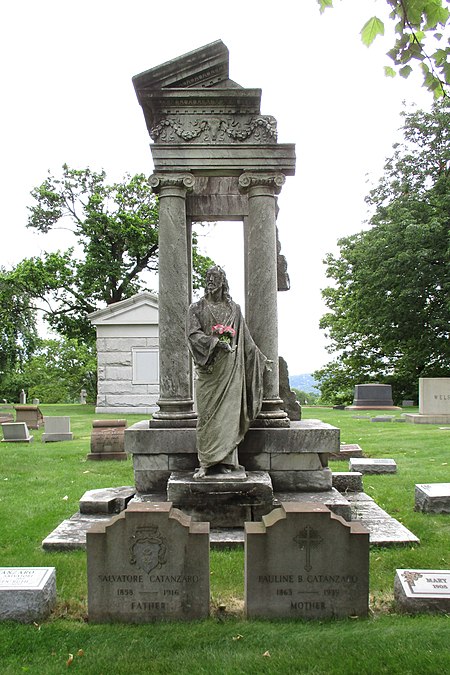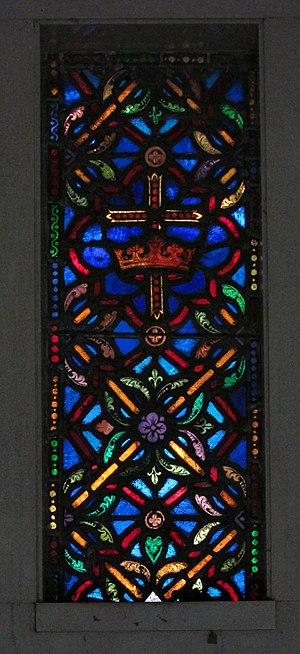
A simplified Celtic cross with more than a whiff of Art Deco; it was probably put up in the 1930s, since the earliest Lockhart here died in 1936. The cemetery’s site attributes the monument to the Campell-Horigan company of Pittsburgh.



Perhaps Dan Brown could recommend a Harvard symbologist to unravel the strands of symbolism here. Christ (holding a bouquet of artificial flowers, because he stood still too long in a Catholic cemetery) is stepping down from a ruined Ionic temple, his left hand seeming to gesture toward the ruins behind him, as if he has something to tell us about them. We could say that the ruined temple represents shattered and broken paganism, and Christ shows the way forward. Or perhaps, in spite of the Greek style, the ruins represent the Temple in Jerusalem, where not one stone was left upon another, and Christ emerges fresh from that ancient tradition, stepping forward to bring the real Temple to us.


Almost starkly modern in form, the Kress mausoleum balances its simple cubical shape with a profusion of ornamental etching, an elaborate bronze door, and unusually artistic letters for the family name.

Stained glass on the inside echoes the external ornament. There are stained-glass windows on the sides as well as in the rear.


Everything seems a bit louder and more obvious in a Catholic cemetery. Here the name of the family is very large; the cross decorations are big (you would not find crosses at all on a Doric mausoleum in a Protestant cemetery), and even the cornices are fat and obvious. We should also mention artificial flowers even on the most expensive mausoleums, because nothing can discourage the faithful from leaving artificial flowers.
The shape of this particular mausoleum is interesting. The details are classical and the decorations are Christian, but the shape is much more like the shape of the Egyptian temples Masons liked to build for themselves. We almost never find the Egyptian style in a Catholic cemetery, but we find echoes of it in the forms of some mausoleums.
Statues of Hope (with anchor) and Faith (with book) guard the entrance. Faith has grown a good crop of shield lichens.




Obviously old Pa Pitt likes this mausoleum. He took quite a few more pictures, but most of them are variations on the same themes. These should be just about enough to convey a good impression of the style and decorations.